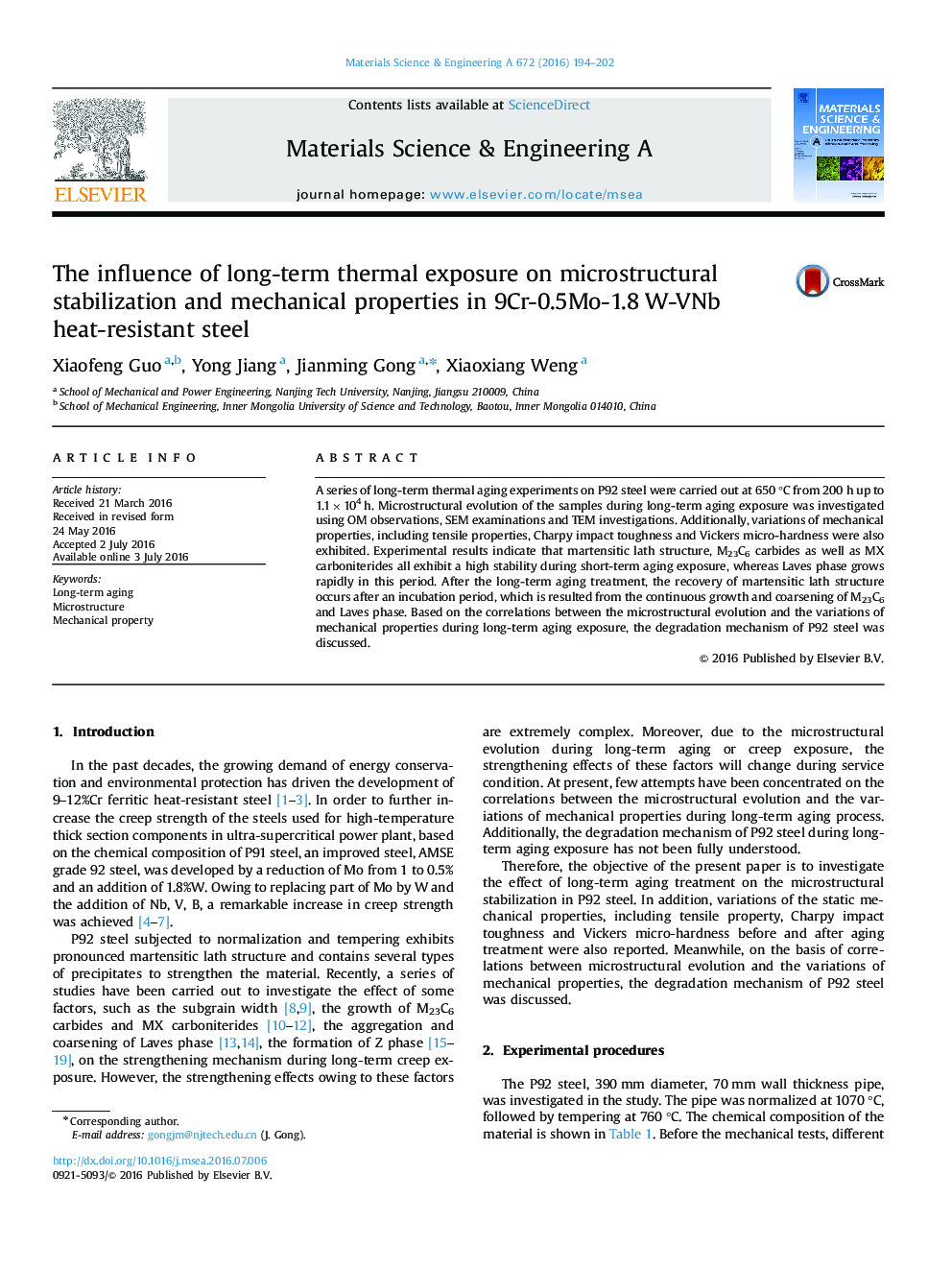| Article ID | Journal | Published Year | Pages | File Type |
|---|---|---|---|---|
| 7975272 | Materials Science and Engineering: A | 2016 | 9 Pages |
Abstract
A series of long-term thermal aging experiments on P92 steel were carried out at 650 °C from 200 h up to 1.1Ã104 h. Microstructural evolution of the samples during long-term aging exposure was investigated using OM observations, SEM examinations and TEM investigations. Additionally, variations of mechanical properties, including tensile properties, Charpy impact toughness and Vickers micro-hardness were also exhibited. Experimental results indicate that martensitic lath structure, M23C6 carbides as well as MX carboniterides all exhibit a high stability during short-term aging exposure, whereas Laves phase grows rapidly in this period. After the long-term aging treatment, the recovery of martensitic lath structure occurs after an incubation period, which is resulted from the continuous growth and coarsening of M23C6 and Laves phase. Based on the correlations between the microstructural evolution and the variations of mechanical properties during long-term aging exposure, the degradation mechanism of P92 steel was discussed.
Related Topics
Physical Sciences and Engineering
Materials Science
Materials Science (General)
Authors
Xiaofeng Guo, Yong Jiang, Jianming Gong, Xiaoxiang Weng,
